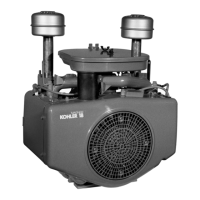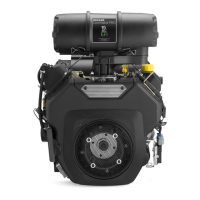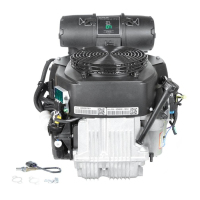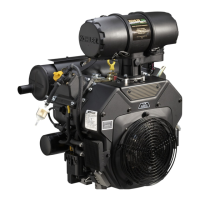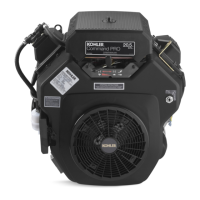35
EFI System
66 690 07 Rev. -- KohlerEngines.com
FUEL SYSTEM
WARNING
Explosive Fuel can cause fi res and severe
burns.
Fuel system ALWAYS remains under HIGH
PRESSURE.
Wrap a shop towel completely around fuel pump
module connector. Press release button(s) and slowly
pull connector away from fuel pump module allowing
shop towel to absorb any residual fuel in high pressure
fuel line. Any spilled fuel must be completely wiped up
immediately.
Function of fuel system is to provide suffi cient delivery
of fuel at system operating pressure of 39 psi ± 3. If an
engine starts hard, or turns over but will not start, it may
indicate a problem with EFI fuel system. A quick test will
verify if system is operating.
1. Disconnect and ground spark plug leads.
2. Complete all safety interlock requirements and crank
engine for approximately 3 seconds.
3. Remove spark plugs and check for fuel at tips.
a. If there is fuel at tips of spark plugs, fuel pump
and injectors are operating.
b. If there is no fuel at tips of spark plugs, check
following:
1. Make sure fuel tank contains clean, fresh, proper
fuel.
2. Make sure that vent in fuel tank is open.
3. Make sure fuel tank valve (if so equipped) is fully
opened.
4. Make sure battery is supplying proper voltage.
5. Check that fuses are good, and that all electrical and
fuel line connections are good.
6. Test fuel pump and relay operation.
FAULT CODES
ECU continuously monitors engine operation against
preset performance limits. If operation is outside limits,
ECU activates MIL and stores a diagnostic code in its
fault memory. If component or system returns to proper
function, ECU will eventually self-clear fault code and
turn off MIL. If MIL stays illuminated, it warns customer
that dealer service is required. Upon receipt, dealer
technician can access fault code(s) to help determine
what portion of system is malfunctioning.
Codes are accessed through key switch and displayed
as blinks or fl ashes of MIL. Access codes as follows.
1. Start with key switch off.
2. Turn key switch on-off-on-off-on, leaving it on in third
sequence. time between sequences must be less
than 2.5 seconds.
3. Any stored fault codes will then be displayed as a
series of MIL blinks (from 2 to 6) representing fi rst
digit, followed by a pause, and another series of
blinks (from 1 to 6) for second digit.
a. It’s a good idea to write down codes as they
appear, as they may not be in numerical
sequence.
b. Code 61 will always be last code displayed,
indicating end of code transmission. If code 61
appears immediately, no other fault codes are
present.
After problem has been corrected, fault codes may be
cleared as follows.
1. Disconnect negative (–) battery cable from battery
terminal, or remove main fuse for ECU for
approximately 1 minute.
2. Reconnect cable and tighten securely, or reinstall
main fuse. Start engine and allow it to run for several
minutes. MIL should remain off if problem was
corrected, and fault codes should not reappear
(codes 31, 32, 33, and 34 may require 10-15
minutes of running to reappear).
Long Pause
Short Pauses
Code 32
3
2
Code 61
1
6
Long Pause
Light remains on at end of transmission
1. Diagnostic display initiated through ignition key sequencing.
2.
Example of Diagnostic Display
Long Pause
3.
4.
5.
6.
7.
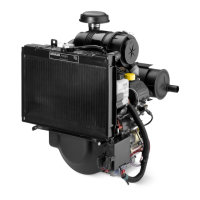
